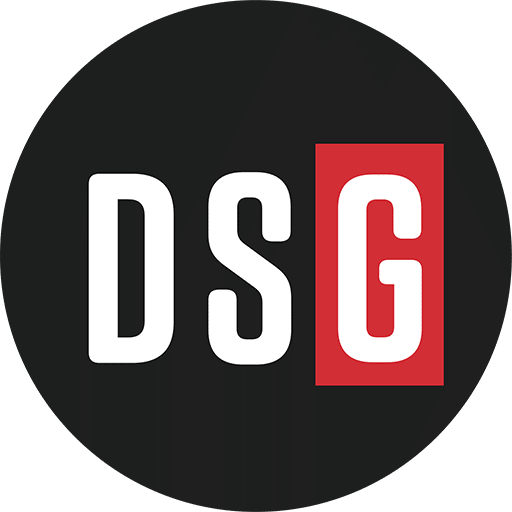Business buyers appreciate it when suppliers make it easy to do business with them. Your customers want an efficient, relevant and productive experience.
A great customer experience isn’t a nice-to-have. It’s a must. Research proves that there’s a correlation between how customers rate their supplier experiences and their likelihood of buying more – and more often. And that translates into increased profitability.
Jonathan Bein, Ph.D., Co-Founder and Managing Partner, Distribution Strategy Group, led industry experts in a discussion of how better technology gives customers a better experience.
Panelists included:
- Graham Smith, Business Development Manager, Esker
- Kerrie Jordan, Group Vice President Product Management, Epicor
- Alex Witcpalek, CEO & Founder, Continuum
- Bryan Hjelm, Vice President of Product, Prokeep
Missed the webinar? Access it on-demand.
The Baseline: What is Customer Experience?
Bein defined customer experience as “the totality of encounters across all distributor touchpoints and all capabilities.”
It includes a face-to-face interaction at a branch. It could include interaction with a field sales rep. It could include customer service either by phone, email or chat. It could include tech support, delivery and even billing as a touchpoint, not to mention online, whether it’s mobile or more traditional desktop.
Why Does Customer Experience Matter in Distribution?
According to Jordan, customer experiences is the lifeblood of an organization.
“There are multiple touchpoints, multiple areas of the business and different ways in which you interact with your customers who expect a consistent quality experience.”
Jordan said tracking these customer interactions across channels is challenging for distributors. The data needs to make it to the next interaction with field sales or a customer service (CSR) rep. “That can be a real challenge in the organization to keep that information consistent and accurate. It’s important that we all talk about that flow of data across the organization and how important it is to inform those who are interacting with your customers.”
Witcpalek said customer experience is a hot topic, but organizations aren’t good at quantifying its value. Establishing a Net Promoter Score (NPS) correlates the customer experience with revenue drivers. “Customer experience can be a little soft fluffy concept sometimes, but when you can start to tie and correlate it to revenues, that’s when you can really start to quantify it,” said Witcpalek.
Smith added:
“Being able to track and measure the impact on service, it’s tough to actually tie that potentially to revenue, but know if you have happy customers, that’s going to mean more repeat customers and maybe they’re referring other customers.”
Does Technology Help or Harm the Customer Relationship?
Much has been written about technology as a disruptor — but could it harm established customer relationships? “At the core, you’re building relationships with customers,” said Hjelm. “These are longtime relationships. These customers have been doing business with distributors for generally many years. How can the company harness the power of technology to keep and enhance that relationship and not degrade or erode it? That’s the struggle and the balance of using some of the technologies. How do you keep that personal connection?”
Witcpalek understands the hesitation. “I think there’s a mentality of, ‘Oh, we don’t want to replace this action with technology because there’s a touch point.’ There’s a relational experience that happens in this interaction. We like our customers to call so we can talk to them.”
The trick, Witcpalek continued, is to, “let the customer operate in the way they want to operate. They’ll let you know when they want to tap you for that experience. You need to be ready when they want you. It’s not on your terms; it’s on their terms. How do you set your business up to be prepared and ready for that?”
Customer Experience as a Point of Differentiation
Distributors sell many of the same products. Can they use customer experience as a point of differentiation from competitors? How would that work?
“You must take a comprehensive view,” Jordan said. “Think about it in terms of the customer. How are they interacting with your organization? What is their journey? Chart that out and then you can start to see those potential pain points or moments of delight that you can accentuate. Maybe that is where your competitive advantage is.”
Witcpalek said studies show, there’s a disconnect between what customers expect and think is a priority versus what distributors consider a priority. “Step one is getting on the same page, really hearing your customer and understanding what they want — and not just your top five customers or a couple in the middle, but the entire ecosystem of your customer base.”
What Do Customers Want?
Bein pointed out that customer experience is not one size fits all. What matters to one customer may be less important to another.
Price may be less of a customer influencer than we assume it is, Hjelm said. “Response times, getting back to that customer with a great experience and service level agreement (SLA) can vary. That may be more applicable for a smaller job, a residential job, as opposed to a large commercial job where price may be more critical.”
Smith said most companies he works with care most about:
“Can you get me what I need when I need it? Are you easy to do business with?”
Examples: Personalization in Customer Interactions
There are many areas in the customer journey where technology can make an impact. Hjelm’s customers use the Prokeep tool to provide personalized content. The tool also uses AI to help counter reps take better notes. The platform focuses on “the spirit of getting your message to the right person quickly and allowing that response with the proper personalization.”
Smith said Esker is best at bridging the gap between digital strategy and manual touchpoints, based on customer preferences for how they want to interact and communicate.
Witcpalek’s company, Continuum, handles reverse logistics. “We look at personalization as situational. You need situational awareness of what you’re dealing with and the context to the problem or transaction.”
He looks at personalization in terms of how to engage the right people to correct a critical selling event. “If this is a stocking return, and I bought too many, that’s simple. It can be an automated transaction,” he said. “If I have a defective product installed in the last 30 days, there’s an end-user with a bad customer experience. How do we pull in the right parties in the organization to correct that? On top of that, keeping the customer up to date every step of the way without having a human in the loop.”
Technology can streamline and personalize some of these experiences while providing the visibility necessary to manage them appropriately.
Jordan said Epicor strongly focuses on the data behind customer interaction. “The ERP is a great backbone; it’s a great location to store that data, but you need the tools to ensure you’re governing it correctly.” The data must be accurate, updated and secure. “That’s a key part of managing personalization across the customer experience.”
Expectations from B2C to B2B
Jordan reminded the panel: “We are all customers, and we carry our expectations to our professional lives. When I log onto the applications that I use, I fully expect it to be curating the data and information for me. That’s the expectation that our distribution customers have every day.”
Smith agreed.
“What we saw during COVID is everybody’s going on Amazon and Walmart.com, and all of a sudden, that became kind of native to us.” That B2C experience carries over to the B2B distribution space, and it’s a significant driver of customer expectations.
“Your customer doesn’t care if it’s a human or a machine entering that order,” Witcpalek said. “They don’t care if a human or machine enters that return. If they’re getting it faster, more accurately, that’s what they want. And then you can add a human on top of that. Now we’re talking about a great customer experience. What roles do I want technology doing, and where’s the middle ground where technology should assist humans?”
Want to hear more? Access this conversation on-demand.


